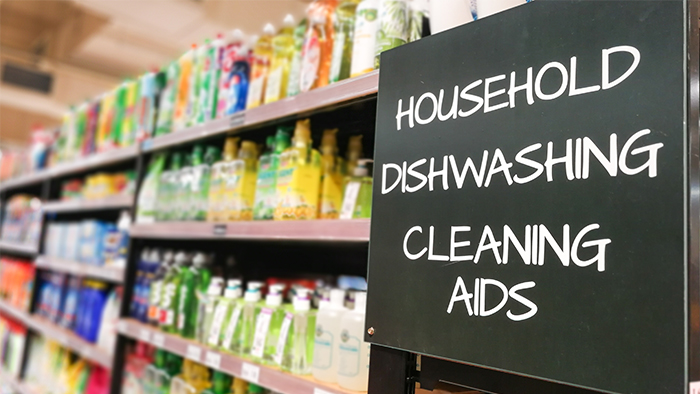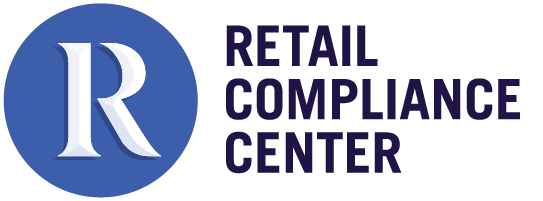Chemicals and Toxics in Retail and its Supply Chain
Retailers have a challenge in gathering information on all of the chemicals in products, interpreting the information, identifying safer alternatives to chemicals of concern, and pushing the marketplace to produce safer chemicals and products.

Chemicals and Toxins
Chemicals are integral to most products of modern life including electronics, household cleaners, cosmetics, garden products, and more. Some chemicals pose real or perceived risks to human health and the environment, and are the subject of advocacy, research, or regulation. Retailers have both financial and reputational incentives to implement management programs to recognize potential concerns ahead of new regulations, reduce or eliminate specific chemicals from products, and comply with existing regulations.
Considerations for Retailers
Regulation. Several U.S. states, as well as the federal government and the European Union Chemicals Agency, are mandating more information on the chemicals in consumer products. There are also regulations that restrict or ban the use of select chemicals. The number of prohibited chemical substances has grown steadily over the past 15 years and continues to expand. Once regulated, a chemical's use may be restricted to certain applications, limited to an allowable amount, or even banned. To comply, companies must determine if a regulated chemical is in a product and confirm that the labeling or use complies with any regulations—no small feat given tens of thousands of products and hundreds, or even thousands, of suppliers.
Snapshot of regulations on chemicals in products
|
9 substances |
Minnesota |
|
|
10 substances |
United States |
|
|
57 sustances |
Maine |
|
|
85 substances |
Washington State |
|
|
332 substances |
European Union |
|
|
960 substances |
California |
|
Many regulated chemicals, such as lead, are widely known for their toxicity, while others are of more recent concern, such as triclosan (the antibacterial substance, used in hand soaps, toothpastes, and other consumer products, that is now banned in Canada, the E.U., and in Minnesota). Regulation often focuses on groups of chemicals and specific product categories, such as preservatives in cosmetics, fragrances in household cleaners, and plasticizers in children's toys (The Consumer Product Safety Improvement Act) and cups (FDA food additive regulations).
Reputation. The scientific community, consumer and environmental advocacy groups, as well as many companies, agree that regulations alone do not adequately protect consumers, workers, or the environment. A reactionary response to news headlines, with hasty removal of products from the shelf, can be costly, while a transparent, proactive approach, such as the Johnson & Johnson Safety & Care Commitment can protect consumer trust, preserve brand reputation, and lower business risks from new regulations, product liability, and product-recalls. "Orderly proactive transition is better than abrupt reaction" is one of five key lessons on chemicals management from Staples Inc.
- Knowing is better than not knowing
- Action is better than inaction
- Eliminating chemical hazard is better than managing exposure
- Transparency/disclosure is better than vagueness or obscurity
- Orderly proactive transition is better than abrupt reaction
How Does Retail Address Chemicals of Concern?
Retailers are working individually and collectively, through groups such as the Retailer Leadership Council of the Green Chemistry & Commerce Council (GC3), to strengthen the science, discontinue the use of the chemicals of highest concern, and address consumer expectations. Costco, Kroger, Safeway, Walgreens, and Home Depot are among the many retailers that voluntarily removed bis-phenol-A (BPA) from infant products, and parabens from personal care products, and reduced volatile organic carbons (VOCs) from paints and household cleaners. In 2018 the EPA's Safer Choice program recognized Wegmans Food Markets Inc. as an outstanding Safer Choice retailer for its Safer Choice-certified store brands and integrated marketing campaign to educate customers.
Retailers and not-for-profit groups are working together to manage chemicals ahead of regulation, connect with retail's common suppliers, benchmark chemicals management practices, and learn from the experiences of others. With access to road-tested tools and active peer networks, there is often little need for companies to pioneer new approaches. Seven of the most relevant chemical management actions for retail are:
1. Chemical Ingredient Assessments: To remain proactive, companies track the emerging concerns of consumers and legislators, and assess high volume or strategically important chemical ingredients for potential risks. Tools include:
- The GreenScreen for Safer Chemical, a free, comparative hazard assessment.
- The OECD toolbox of chemical assessment tools.
- The SINlist free search tool for identifying chemicals of very high concern
2. Supplier Chemical Assessments: Ask suppliers for data on chemical constituents. In order to prioritize suppliers, many retailers seek guidance from industry peers, NGO-partners, or academics to identify the products and components in their supply chain with the highest potential to contain chemicals of concern. The Chemical Footprint Project's benchmarking data enables companies to compare suppliers' chemical footprint and management practices.
3. Restricted Substances Lists (RSL): Retailers may establish one RSL, or differentiate between private labels and supplied products. Kroger's RSL covers its private label Simple Truth and Nature's Market department products, and includes restrictions on artificial preservatives and ingredients in food products. REI has an RSL list for private label products and suppliers.
4. Substitution or Redesign to Eliminate Priority Chemicals: As a chemicals management program evolves, it can include goals and metrics for removing priority chemicals, and a process to determine what drives the use of those priority chemicals so solutions can be found. BizNGO offers a guide to replacing chemicals of high concern with safer alternatives.
5. Formal, Continuous Processes: Continuous screening is important for effective management of new products with new chemical ingredients. The Chemical Footprint Project and the Outdoor Industry Association’s Chemical Management Module offer free industry benchmarking and a roadmap to identify points for improvement within a company, whether it is just starting or already a leader.
6. Integration with Design, Buying, and Procurement: Companies screen for chemicals of concern during product design, buying decisions, and centralized purchasing. To identify and support preferred chemical ingredients, retailers are connecting with chemical manufacturers through non-profit organizations like GC3. There are also benefits for retailers to eliminate chemicals in products used internally for operations such as cleaning and maintenance, and in services such as automotive repair, dry cleaning, and home improvement. Benefits can include eliminating employee exposure, and avoiding the costs of personal protective equipment, special training, handling and disposal, and reducing regulatory obligations.
Integrate into Consumer Sales: Voluntary certifications and labels provide consumers with additional information on the products they buy. Home Depot's "Eco Options" program promotes VOC-free paints, and cleaners, and Wegmans uses end cap displays to feature products that meet the U.S. EPA Safer Choice standard.
7. Alliances to Further Green Chemistry Innovation: Retailers are increasingly collaborating to promote transparency and improve access to comprehensive hazard data. For example, Best Buy, CVS Health, Lowe's, Home Depot, Staples, Target, and Walmart are members of the Green Chemistry and Commerce Council's Retailer Leadership network, "promoting safer chemicals, materials and products across retail supply chains." Focusing on fragrance ingredients, Target and Walmart are working with suppliers to obtain information, which suppliers have historically not disclosed. Walmart's policy requests "full disclosure of all ingredients including those typically protected under trade secrets (e.g. fragrances)."
Maturity Steps for Chemicals and Toxins
To enable retailers to benchmark their chemicals management initiatives, RILA's Retail Sustainability Management Maturity Model includes a specific dimension on chemicals and toxics:
|
Level of Maturity |
Activities at the maturity stage |
|
Starting |
|
|
Standard |
|
|
Excelling |
|
|
Leading |
|
|
Next Practice |
|
Tags
-
Chemical Ingredients and Labeling
-
Retail Sustainability



